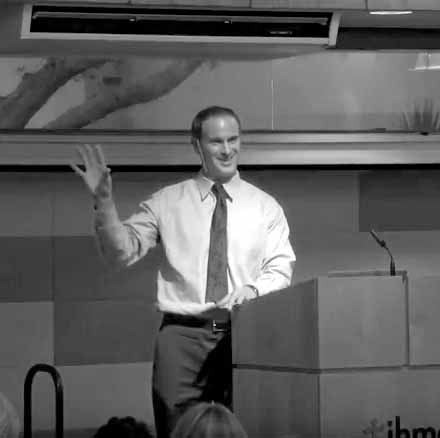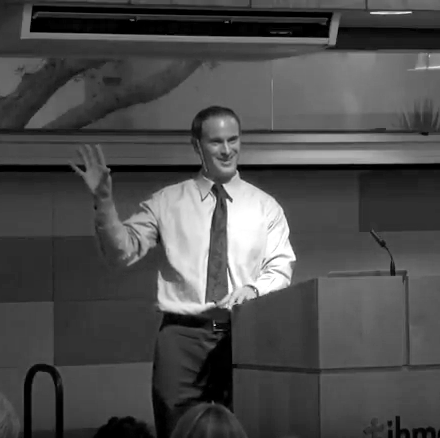36-Hour Fast (Monk Fast): Everything You Need to Know
Written by Stephen Anton PhD on July 5th, 2022

The 36-hour fast is a challenging fast in that it involves not eating or consuming beverages containing calories for extended period of time (36 hours or longer).
During the fasting period, one can and should consume copious amounts of water.
It’s also ok to consume unsweetened tea or black coffee but no other beverages or food should be consumed during this time period.
What Is the Purpose of a 36-Hour Fast?
One of the reasons people choose to do a 36-hour fast is because it can enhance all functions of the body.
When done successfully, the 36-hour fast can produce healthier and more resilient cells.
This extended fast can result in a number of benefits (provided the individual is adapted to fasting).
Also, don’t be surprised if your physical capacity improves, along with your ability to exercise for longer periods of time.
Just as the further you pull back a bow, the farther the arrow will go, the longer you fast the greater the benefits (to a point).
How to Do a 36-Hour Fast?
The 36-hour fast can eliminate or help the body eliminate waste products that are deep in the tissues.
It does this because it is long enough that it encourages the body to activate its metabolic switch and shift its energy source from glucose to ketones.
When this happens, our mitochondria are able to produce energy more efficiently and effectively.
At the same time, they produce less metabolic waste and encourage the body’s natural waste removal process of autophagy to take place.
For a health and metabolically flexible individual, the metabolic switch may be activated after a short fasting period of 12 hours but for most individuals longer fasting periods are needed.
And this is where the extended fast can come in.
The longer the fast, the more likely it is that the metabolic switch will be activated and lead to higher levels of ketones in the blood.
So, to really clean the cells one should consider a long-term fasting period of 36-hours or longer.
How Is a 36-Hour Fast Different From Intermittent Fasting?
Time-restricted eating is a popular type of intermittent fasting, where an individual fasts for approximately 14-18 hours each day and thus only consumes food for a shortened time period of 6-10 hours.
This approach to fasting is what most people think of when they hear the term intermittent fasting, but the truth is there are many type of intermittent fasting.
The key difference between this approach and the 36-hour fast is the duration and frequency of the fasting period.
At a biological level, the effects of both approaches are similar but the 36 hour fast can really amplify the beneficial changes that occur while fasting.
This is because the levels of ketones in the body rise as the fasting duration increases which results in higher levels of autophagy (waste removal) and lower levels of inflammation in the body.
These same benefits are likely to occur with time-restricted eating but at a lower level.
This is because the levels of ketones in the blood will likely not rise to a level comparable to the 36-hour fast unless an individual really increases their energy expenditure during the fasting period.
Can Anyone Do a 36-Hour Fast?
Theoretically yes.
BUT it is highly recommended that you first adapt to shorter fasting periods.
Just as it isn’t advisable to try to run five miles if the longest distance you have run is one mile, it would likely not be a good idea to try fast for 36 hours if you have not yet successfully fasted for 12 to 16 hours.
For this reason, I strongly recommend that individuals embark on such an extended fast only after they have adapted to shorter fasting periods.
How to Prepare for a 36-Hour Fast
Before engaging in an extended 36-hour fast, it’s really important to think about the environment you put yourself in while engaging in the 36 hour fast.
Ideally, you would want to do this type of fast only when there are a few other stressors happening or during a relatively stress-free time period.
It’s best of you can relax and engage in activities that are not too stressful, such as reading, socializing, and even watching television, as the fast represents a stressor for the body.
On the other hand, many people find that focusing in on work makes the fasting period easier and time go faster.
This of course depends on the type of work you do and would be most applicable to individuals whose work involves sedentary tasks as opposed to hard physical labor.
Take Home Points
The 36-hour fast represents an advanced type of intermittent fasting and has the potential to provide a number of health benefits.
If done successfully, most people will report feeling healthier and having more energy after this fast.
This doesn’t mean that everyone should try it, however.
The importance of matching the stressor, whether that be exercise or fasting, to the body’s capacity cannot be overstated.
It’s clear that our body’s need some level of stress to grow stronger, but the key is providing the right stimulus at the right time, followed by the recovery period.
For individuals who have successfully adapted to shorter fasting time periods, such as with time restricted eating, the 36-hour fast could provide additional health benefits and is definitely worth considering.
36-Hour Fast (Monk Fast): Everything You Need to Know
Written by Stephen Anton PhD on July 5th, 2022

The 36-hour fast is a challenging fast in that it involves not eating or consuming beverages containing calories for extended period of time (36 hours or longer).
During the fasting period, one can and should consume copious amounts of water.
It’s also ok to consume unsweetened tea or black coffee but no other beverages or food should be consumed during this time period.
What Is the Purpose of a 36-Hour Fast?
One of the reasons people choose to do a 36-hour fast is because it can enhance all functions of the body.
When done successfully, the 36-hour fast can produce healthier and more resilient cells.
This extended fast can result in a number of benefits (provided the individual is adapted to fasting).
Also, don’t be surprised if your physical capacity improves, along with your ability to exercise for longer periods of time.
Just as the further you pull back a bow, the farther the arrow will go, the longer you fast the greater the benefits (to a point).
How to Do a 36-Hour Fast
The 36-hour fast can eliminate or help the body eliminate waste products that are deep in the tissues.
It does this because it is long enough that it encourages the body to activate its metabolic switch and shift its energy source from glucose to ketones.
When this happens, our mitochondria are able to produce energy more efficiently and effectively.
At the same time, they produce less metabolic waste and encourage the body’s natural waste removal process of autophagy to take place.
For a health and metabolically flexible individual, the metabolic switch may be activated after a short fasting period of 12 hours but for most individuals longer fasting periods are needed.
And this is where the extended fast can come in.
The longer the fast, the more likely it is that the metabolic switch will be activated and lead to higher levels of ketones in the blood.
So, to really clean the cells one should consider a long-term fasting period of 36-hours or longer.
How Is a 36-Hour Fast Different From Intermittent Fasting?
Time-restricted eating is a popular type of intermittent fasting, where an individual fasts for approximately 14-18 hours each day and thus only consumes food for a shortened time period of 6-10 hours.
This approach to fasting is what most people think of when they hear the term intermittent fasting, but the truth is there are many type of intermittent fasting.
The key difference between this approach and the 36-hour fast is the duration and frequency of the fasting period.
At a biological level, the effects of both approaches are similar but the 36 hour fast can really amplify the beneficial changes that occur while fasting.
This is because the levels of ketones in the body rise as the fasting duration increases which results in higher levels of autophagy (waste removal) and lower levels of inflammation in the body.
These same benefits are likely to occur with time-restricted eating but at a lower level.
This is because the levels of ketones in the blood will likely not rise to a level comparable to the 36-hour fast unless an individual really increases their energy expenditure during the fasting period.
Can Anyone Do a 36-Hour Fast?
Theoretically yes.
BUT it is highly recommended that you first adapt to shorter fasting periods.
Just as it isn’t advisable to try to run five miles if the longest distance you have run is one mile, it would likely not be a good idea to try fast for 36 hours if you have not yet successfully fasted for 12 to 16 hours.
For this reason, I strongly recommend that individuals embark on such an extended fast only after they have adapted to shorter fasting periods.
How to Prepare for a 36-Hour Fast
Before engaging in an extended 36-hour fast, it’s really important to think about the environment you put yourself in while engaging in the 36 hour fast.
Ideally, you would want to do this type of fast only when there are a few other stressors happening or during a relatively stress-free time period.
It’s best of you can relax and engage in activities that are not too stressful, such as reading, socializing, and even watching television, as the fast represents a stressor for the body.
On the other hand, many people find that focusing in on work makes the fasting period easier and time go faster.
This of course depends on the type of work you do and would be most applicable to individuals whose work involves sedentary tasks as opposed to hard physical labor.
Take Home Points
The 36-hour fast represents an advanced type of intermittent fasting and has the potential to provide a number of health benefits.
If done successfully, most people will report feeling healthier and having more energy after this fast.
This doesn’t mean that everyone should try it, however.
The importance of matching the stressor, whether that be exercise or fasting, to the body’s capacity cannot be overstated.
It’s clear that our body’s need some level of stress to grow stronger, but the key is providing the right stimulus at the right time, followed by the recovery period.
For individuals who have successfully adapted to shorter fasting time periods, such as with time restricted eating, the 36-hour fast could provide additional health benefits and is definitely worth considering.

Get the Beginner’s Guide to Intermittent Fasting
Take advantage of this FREE PDF and learn the basics of intermittent fasting.

Get the Beginner’s Guide to Intermittent Fasting
Take advantage of this 100% free PDF and learn the basics of intermittent fasting.

Get the Beginner’s Guide to Intermittent Fasting
Take advantage of this FREE PDF and learn the basics of intermittent fasting.









